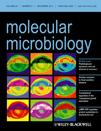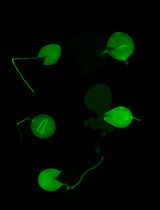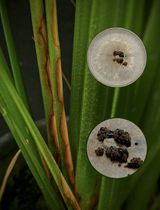- EN - English
- CN - 中文
Macrophage Infection by Dimorphic Fungi
真菌引起的巨噬细胞感染
发布: 2012年07月20日第2卷第14期 DOI: 10.21769/BioProtoc.236 浏览次数: 11929
Abstract
Mammalian infection by dimorphic fungi occurs through the inhalation of asexual spores (conidia), which are phagocytosed by host pulmonary alveolar macrophages of the innate immune system. Once phagocytosed, fungal conidia germinate into the pathogenic cell type; unicellular yeast cells which divide by fission (Vanittanakom et al., 2006; Boyce et al., 2011). To investigate if mutation of a particular fungal gene affects macrophage phagocytosis or the production of yeast cells, a murine macrophage cell culture assay can be utilized. This protocol was developed for Penicillium marneffei but is applicable to most dimorphic fungi.
Background
Materials and Reagents
- Lipopolysaccharide (LPS) from E. coli (Sigma-Aldrich, catalog number: L2630 )
- Flask (or petri dish) of confluent J77A murine macrophages (available from Sigma-Aldrich, catalog number: 91051511 )
- 10x Trypsin-EDTA solution (Life Technologies, Gibco®, catalog number: R-001-100 )
- 1 x 107/ml fungal conidia (suspended in 0.001% Tween 20) (harvested from a 10 day 25 °C agar plate)
- 1 mg/ml fluorescent brightener 28 (calcofluor) (Sigma-Aldrich, catalog number: F3543 )
- 70% ethanol (any supplier)
- NaCl (ChemSupply, catalog number: SA046 )
- KCl (ChemSupply, catalog number: PA054 )
- MgSO4 (ChemSupply, catalog number: MA048 )
- NaOH (ChemSupply, catalog number: SA178 )
- Na2HPO4 (Thermo Fisher Scientific/Ajax Finechem Pty, catalog number: A621 )
- KH2PO4 (Merck KGaA, product number: 1048729025 )
- Fetal bovine serum (FBS) (Life Technologies, Gibco®, catalog number: 26140 )
- Penicillin streptomycin solution (Sigma-Aldrich, catalog number: P0781 )
- L-glutamine (Sigma-Aldrich, catalog number: 59202C )
- Dulbecco’s Modified Eagle’s Medium (DMEM) (Sigma-Aldrich, catalog number: D6546 )
- Paraformaldehyde (Sigma-Aldrich, catalog number: P6148 )
- PIPES (Sigma-Aldrich, catalog number: P6757 )
- EGTA (Sigma-Aldrich, catalog number: E4378 )
- Tween 20 (Sigma-Aldrich, catalog number: P1379 )
- 4% fixation solution (see Recipes)
- Phosphate buffered saline (PBS) (see Recipes)
- Complete DMEM (see Recipes)
- 0.001% Tween 20 (see Recipes)
- PME buffer (see Recipes)
Equipment
- Standard tabletop centrifuges
- Clyde-Apac BH2000 Series Biological safety cabinet class II
- Leica Microscope with a UV filter (Reichert-Jung)
- Refrigeration centrifuge with a swing bucket rotor (Beckman Coulter, model: TJ-6 )
- Cell culture incubator (37°C, 5% CO2)
- Bunsen burner
- Well sterile cell culture plate (Greiner Bio-One, catalog number: 657160 )
- Disposable, sterile 10ml pipettes (Corning Incorporated/Costar stripettes, manufacture number: 4488 )
- Sterile 10 ml centrifuge tubes (any supplier)
- 22 x 22 mm standard microscope coverslips (any supplier)
- 76 x 26 mm standard microscope slides (any supplier)
- Nail varnish (any supplier)
- Biological safety cabinet
- Haemocytometer
- Tweezers
- 25 cm2 small flask
- 75 cm2 big flask
Procedure
文章信息
版权信息
© 2012 The Authors; exclusive licensee Bio-protocol LLC.
如何引用
Boyce, K. and Andrianopoulos, A. (2012). Macrophage Infection by Dimorphic Fungi. Bio-protocol 2(14): e236. DOI: 10.21769/BioProtoc.236.
分类
微生物学 > 微生物-宿主相互作用 > 真菌
细胞生物学 > 细胞分离和培养 > 细胞生长
免疫学 > 免疫细胞功能 > 巨噬细胞
您对这篇实验方法有问题吗?
在此处发布您的问题,我们将邀请本文作者来回答。同时,我们会将您的问题发布到Bio-protocol Exchange,以便寻求社区成员的帮助。
提问指南
+ 问题描述
写下详细的问题描述,包括所有有助于他人回答您问题的信息(例如实验过程、条件和相关图像等)。
Share
Bluesky
X
Copy link












